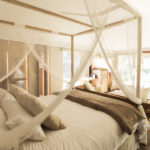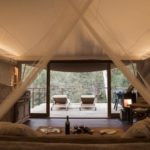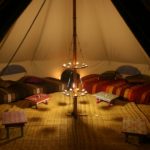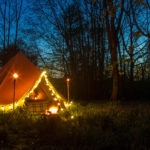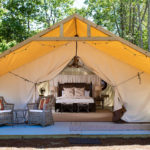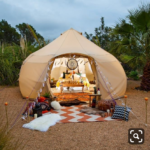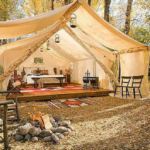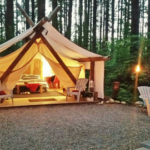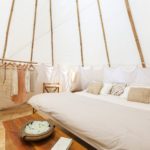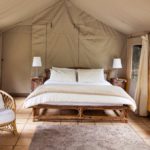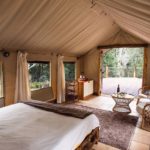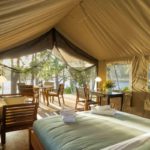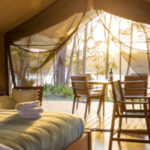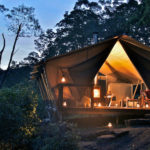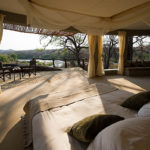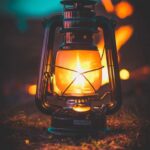This course focuses on how to set up an intelligent campsite. It does not include orienteering (land navigation / map reading).
–
Table of Contents:
- Introduction
- Vocabulary
- History of Camping
- Do’s & Don’ts
- Progression
- Additional Notes
- 2023 Update: Astrology
- Example Images / Visual Aids
–
Introduction:
- >150,000,000 humans on Earth in the modern times were homeless; ~2% of their species’ population on this world.
- 1,600,000,000 of their species on Earth lacks adequate housing; ~24% of their population.
- Hundreds of thousands of Americans are homeless.
- Hundreds of thousands of Canadians are homeless.
- 98% of all land on Earth is undeveloped; there are no cities or even roads on it.
- Some cities have banned any form of overnight or long-term parking, classifying it as camping. A few cities even made it illegal to stop a vehicle for more than 15 minutes. People limited to such bizarre places have to learn how to “stealth camp”; camping in ways which are difficult to notice.
- Even our High King, for decades, on and off, was forced by the corrupt/heartless Outlander-humans to resort to camping for months on end, entirely dependent upon himself and nature to provide what he needed.
It pays to know how to camp well.
Thankfully, camping has many benefits. It isn’t a last resort, but an extremely useful option / opportunity / ‘blessing in disguise’.
–
Vocabulary:
- A-frame: a basic tent shape, the cross section of which resembles an “A”.
- Altimeter: an instrument that measures elevation by using barometric (air) pressure.
- Anorak: a pullover jacket. Anoraks are practical because there is no zipper running top to bottom that can fail or let your body warmth escape when moving.
- Azimuth: same as bearing. Refers to the degree of bearing from your current position to a landmark or destination. Reversing the bearing would be known as a back azimuth or back bearing.
- Back tack: a stitch sewn over a stitch to reinforce highly stressed areas where two pieces of fabric must be joined. Good quality tents use back-tack stitching.
- Baffle construction: a design that keeps the filling in a sleeping bag or outerwear garment from shifting back and forth and causing cold spots. Baffles, or sewn box cavities, can vary in size, shape, and volume within the same garment or bag.
- Baseplate: the see-through plate of an orienting compass onto which the compass housing is mounted.
- Bathtub floor: in tents, a floor that curves upward at its perimeter and is joined to the canopy. Bathtub floors keep stitching away from ground moisture, thus adding to a tent’s waterproofness.
- Bear bag: in bear country, campers must take measures to safeguard their food and cooking utensils. Food items are placed in a strong, waterproof bag (the bear bag), tied to a rope and suspended out of reach.
- Bearing: the direction of travel from your current position to a landmark or destination, expressed in degrees from 1 to 360. Also called an Azimuth.
- Bench mark: a permanent object that is either natural or man-made with a known elevation that can be used as a reference point when navigating.
- Billy: a small cooking pot with a handle on top, used for cooking food for one to three people.
- Bivouac: the site where a tent is set up; also a forced camp usually made for one night when bad weather stops progress.
- Bivy sack: a small one-man tent or bag of sleeping bag proportions often used for emergency shelter.
- Blaze: a sign, painted symbol on a tree or a rock cairn used to mark a trail.
- Boardwalk: a wooden bridge providing walkways along a trail or beach. Boardwalks are typically built to protect fragile areas from hikers or to protect hikers from waterways and wildlife.
- Boondocking (RV term): (or “dry camping”) is a type of camping by an RV-er. Camping in this manner involves using a all the self-contained facilities of an RV and without the use of electric, sewer or water hookups
- Bushwhacking: making one’s way through bushes or undergrowth without the aid of a formal trail.
- Cache: a placement of food and/or supplies along or near a trail or route of travel for future use.
- Cairn: a stack of rocks used to mark a trail’s route through areas devoid of trees.
- Canopy: the inner wall of a double-walled tent. The canopy is breathable; the outer wall, or fly, is waterproof.
- Cardinal points: the four main points of direction on a compass–North/360 degrees; East/90 degrees; South/180 degrees; and West/270 degrees.
- Compression stuff sack: a stuff sack with cinch straps that compress the sleeping bag or pad inside so it’s small enough to carry easily inside an internal frame pack and minimizes the overall volume within the pack.
- Conduction: the loss of body heat through direct contact with a cold surface, damp clothing, cold water, etc.
- Convection: loss of body heat due to wind or other conditions that circulate cold air in exchange for the warm air your body has heated. The body will continuously attempt to warm the skin that is cooled by the cold air, causing you to lose your body heat and become hypothermic.
- Cordura: a high-tenacity, abrasion and tear resistant textured yarn used for backpacks and tough duffle bags.
- Corduroy: a road, trail or bridge formed by logs laid transversely, side by side, to facilitate crossing swampy areas.
- Daypack: small backpack that holds enough gear for a one-day outing.
- Deadman: a log or rock buried in the ground to provide a solid point for anchoring a tent in ground too soft for stakes.
- Declination: the difference in degrees between magnetic north (the direction the magnetic needle on a compass points) and true or geographic north (the direction maps are printed towards).
- Deep-lugged sole: a boot sole featuring deep ridges and grooves for maximum traction.
- Denier: (pronounced “den-year”) a weight measurement used to refer to the fineness of a yarn or thread used in some backpacking and camping equipment. The lower the denier, the more thin the thread. The higher the denier the more durable the fabric will be.
- Dome: a tent shape where the poles create a dome by curving over each other.
- Double blaze: two painted blazes or markings on a tree that announce a change in direction or junction along a trail.
- Double-wall construction: a style of tent architecture utilizing two walls–an inner wall, or canopy, made of breathable nylon, and an outer waterproof wall or fly.
- Down: the soft, fluffy underlayer of waterfowl plumage used as insulation in some sleeping bags and coats.
- Draft tube: the insulated flap that covers the length of a sleeping bag zipper. Without a great draft tube, cold air would be sucked in and warm air forced out every time you moved.
- Dry Camping: see “Boondocking”
- DWR: acronym for Durable Water-Repellent finish, a treatment found on outerwear that forces water to bead much as wax does for a car.
- Encapsulation technology: a special durable water-repellent finish (DWR) that wraps around each fabric fiber, as opposed to going on like a continuous coat of paint. Provides excellent water-repellency, doesn’t compromise breathability, is abrasion-proof, adds tear strength, and makes garments feel soft and supple. Used in some down and Polarguard 3D-insulated clothes.
- External frame pack: a backpack supported by a rigid frame on the outside of the pack.
- Floor area: the amount of usable floor space in a tent, measured in square feet.
- Foot: the rounded end of a sleeping bag, also called a footbox.
- Footprint: the shape and square footage of a tent floor.
- Four-season tent: a tent designed to handle any weather conditions, including harsh winter weather.
- Freestanding tent: a tent that does not require stakes or guy lines to stand erect.
- Gaiter: a water-repellent, internal sleeve that can be tightened around boot and lower leg to keep out snow.
- Gear loft: an overhead shelf in a tent. Keeps small gear overhead, providing more floor space for bags.
- Giardia: more properly known as giardiasis, an infection of the lower intestines caused by ingesting the amoebic cyst, Giardia lamblia, in untreated water.
- Ground stakes: anchors that hold a tent to the ground.
- Gusseted tongue (bellows): a leather piece attached to both sides of the upper on a hiking boot, designed to keep out water and dirt.
- Guy point: one of several points outside a tent where a line (a guy line) can be attached and then secured to a stake or other anchor in order to increase a tent’s structural integrity.
- Haversack: a bag or pouch used by hikers to carry food, usually carried at the side by a shoulder strap.
- Head gasket: a piece sewn around the hood of a sleeping bag to keep in warm air.
- Hip belt: the main support device on a backpack. Large padded belt that buckles around the waist and is fully adjustable.
- Housing: the rotating part of a compass that holds the damping fluid, the magnetic needle and has degrees engraved around its edge from 1 to 360. Also known as the Azimuth Ring.
- Imu: a shallow pit used for cooking.
- Internal frame pack: a backpack supported by stays on the inside.
- Kerf: a cut made by an ax, saw, etc.
- Kindling: small, thin, dead wood used to start a fire.
- Lean-to: a three-sided shelter with an over-hanging roof and one open side.
- Leave No Trace: a camping/outdoor concept that adheres to a strict policy which means visitors will not leave trash along trails or campsites to preserve the natural area. Sometimes referred to as “pack in / pack out”.
- Lexan: a material used in water bottles and other camping gear that is extremely durable and can withstand a wide range of temperatures.
- Loft: the height and thickness of insulation in a sleeping bag.
- Lumbar pad: a support on a backpack to comfort heavy loads on the lower back.
- Magnetic north: the geographical region towards which all magnetic needles point. This point is approximately 1,300 miles south of true north.
- Magnetic north: the geographical region towards which all magnetic needles point. This point is approximately 1,300 miles south of true north.
- Marquee: a large tent, often used as a dining or meeting tent.
- Modified dome: a dome tent that has been designed for specific elements, such as wind or snow.
- Mummy bag: a close fitting, shaped, hooded sleeping bag very efficient at conserving body heat.
- No-see-um mesh: a tent mesh so fine that it keeps out the tiny biting bugs called no-see-ums.
- Noggin: a small camper’s mug.
- Orienteering: using a map and compass in the field to determine your route of travel.
- Packed size: the dimensions of a collapsed tent and its contents, in square inches.
- PolarGuard 3D: a hollow-fiber, highly durable, polyester insulation used in sleeping bags and clothing that has a high warmth-to-weight ratio.
- Pole sleeves: fabric tunnels on the outside of a tent into which the tent poles are inserted.
- Primaloft: a microfibrous polyester insulation so close to down in terms of structure, warmth, and feel that it’s also known as patented synthetic down. Primaloft is lightweight, durable, very compressible, and unlike down, highly water repellent.
- Priming: allowing fuel to collect in the burner of a white-gas stove before ignition.
- Prismatic compass: a compass with a mirror designed to allow a user to see both distant objects being sighted and the compass face at the same time.
- Puncheon: a log bridge built over fragile terrain that is wet.
- Punkies: also called no-see-ums; a tiny insect called a midge, which bites severely.
- Purifier: a drinking water system that removes contaminates and eliminates viruses with a combination of specialized filters.
- Quilted: a stitching style that runs through the shell and lining of a sleeping bag or garment to keep insulation from shifting. Quilting is lighter and less expensive than it’s more complex cousin, baffle construction. It is also less efficient because the stitching compresses the loft out of the fabrics and allows cold to move freely through the compressed area around the needle holes.
- Rain fly: a tent covering that aids in keeping a tent dry and windproof.
- Rating: the degree Fahrenheit to which a sleeping bag is constructed to sleep comfortably. i.e. -30 degrees, 0 degrees, +15 degrees.
- Rucksack: a type of knapsack or backpack, usually made of canvas with two shoulder straps.
- S’mores: a popular camping dessert, consisting of chocolate bars and toasted marshmallows sandwiched between graham crackers.
- Seam tape: a waterproof tape applied over all seams on a tent or other equipment meant to be totally water repellent.
- Shell: the outermost material in a sleeping bag or outdoor clothing, consisting of a fabric used to meet a particular demand such as abrasion resistance, water repellency or suppleness.
- Shock cord: an elastic cord running through tent poles to separation or loss of the poles, and to expedite set-up.
- Single-walled tent: a lightweight, single-fabric construction tent that is chemically treated for insulation and waterproofness but which may not be very breathable.
- Snow stakes: wide, platform-type stakes used to anchor a 4-season tent in snow.
- Stay: the backbone of aluminum or plastic material supporting an internal frame backpack.
- Stile: a structure built over a fence that allows hikers to cross over without having to deal with a gate.
- Switchback: a zigzagging trail up the side of a steep ridge, hill or mountain, which allows for a more gradual and less strenuous ascent.
- Tent Pad: an area at a campground site designed for tent set up. Tent pads are usually covered in sand, cement or small gravel.
- Three-season tent: a tent recommended for use in summer, spring, and fall.
- Topographical map: a map that identifies land features (topography), as well as roads and man-made structures.
- Trailhead: the place where a trail, or multiple trails begin.
- Tread: a trail’s surface.
- Tumpline: a strap across the forehead and over the shoulders, used to carry loads on the back.
- Tunnel tent: a low profile tent that is long and rounded.
- Ultralight tent (Camping): a tent designed for one or two people, weighing five pounds or less and designed to carry on or in a backpack.
- UV degradation (Camping): a breaking down of material due to the sun’s harsh ultraviolet rays. UV degradation can be a potential problem with tent flies exposed to the sun for extended periods.
- Vestibule: a covered area outside of or connected to a tent, usually created by an extended rain-fly or a special attachment.
- Volume: the amount of space in a backpack measured in cubic inches.
- White-gas: a distillate of petroleum, also called petroleum naptha, commonly used in backpacking stoves.
- Youth Camp: a term meaning camp for young people (teenagers or even pre-teens).
–
History of Camping:
As it is enjoyed today (in tent, for leisure, often at a place reserved by a local, state, or national government for enjoying nature free of any construction/housing), camping is said to’ve started in the 1800s. Depending on the country, one was likely to’ve seen official campsites being established throughout the 1900s. By the 2000s, almost every land on Earth was divided into human-enforced territories, limiting campsites and free-camping to national parks and similar areas, though countries in remote areas, and with less development, still had spacious sections where no rangers or other enforcement existed to deter spontaneous campers.
Some more claimed details are here.
–
Do’s & Don’ts:
Please always…
- douse campfires (or at least cover their embers/ashes with dirt) before walking away from them
- let friends/family know where you are going, and when they should expect you to return
- remove/take whatever you brought with you
- respect other/fellow campers
- think positive things during your camping (and along the way to and from your campsite/s); positivity manifests good situations, pleasant surprises, and the maintenance/re-greening of nature areas
Please never…
- abandon campfires (or any fire)
- be noisy (except with normal speaking during walks; to alert wildlife to your presence, so that they do not get startled or upset by it)
- litter
- remove/take souvenirs (beyond just a small handful of sage, for example)
- urinate (or defecate) upstream of other known campers/sites
–
Progression:
General:
- packing a backpack based on different planned outings
- setting up a tent in the classroom
- finding water, such as in dry/desert areas
- identifying ideal campsites outside
- practicing creating shelters (such as for when a tent is not available)
- bow drill
- smoke signaling
- boiling via rocks
- cooking nettles and other flora to neutralize irritants
- learning to “read” campsites for signs as to what they are for, how responsible/intelligent their campers are, etc.
- challenging places; urban camping, etc. (including best spots such as 24-hr businesses, rest-stop monthly limits, truck-stop shower-rooms, gyms rarely having curtain-ed shower-stalls, subzero concerns when hauling some gear/hardware, etc.)
By School-year:
- Definitions
- Flora
- Fauna
- Kit
- Water Sources
- Navigation (incl moss on north side, needle on pool)
- Sleeping Systems (incl making own)
- Bear Grylls (all tips; rock reflects heat)
- Animal Guides / Signs (Native Amer., white wolf, etc.)
- Tracking
- _TBA
- Fortifications
- Exodus
- _
- _
- Indefinite
–
Additional Notes:
With these basics grasped, students are ready to practice them at any of our city’s many glamping sites.
–
2023 Update: Astrology
In our camping courses, we teach how to determine when to camp based on which cosmic formations and influences will be in the sky.
–
Example Images / Visual Aids:
–
Also see:
- Survivorman Les Stroud Rates 9 Desert-Survival Scenes In Movies And TV | How Real Is It? | Insider
- How to make a natural torch with a pinecone and sap
- demonstration of turning rope into a controlled torch
- canoe bounce; no-oars technique
- chainsaw rapid blade change
- self-starting lighter
- 4 uses for pine trees
- sleeping in a hollow fallen tree trunk
- apple shave fire starter
–




